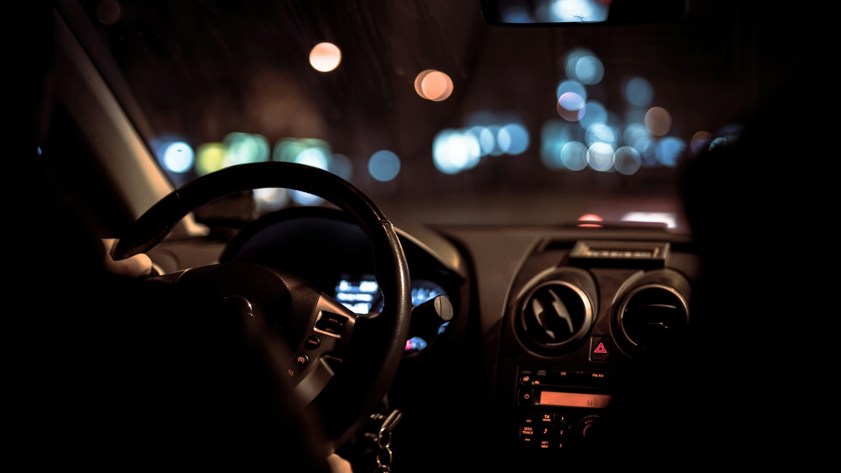
Navigating the roads after the sun sets introduces a unique set of challenges to the driver. Driving in the dark is entirely different from driving in the day and requires much more concentration.
Whether you're a seasoned driver accustomed to nighttime driving or a novice who occasionally drives in the dark, it's essential you know the best practices to keep you safe.
In this blog, we delve into the top 10 tips for mastering the art of safe and efficient night time driving to bolster your confidence when you drive in dark conditions.
We talk about:

Adjusting and cleaning your headlights
Regular maintenance of your headlights is crucial for driving in the dark. Ensure your headlights are correctly aligned for maximum road coverage without blinding the oncoming traffic. It's advised that you should align your headlights every 3,000 miles or so.
If you plan on adjusting your headlights, follow the instructions in your owner's manual.
You should also clean your headlights every so often to remove road grime. We'd recommend using a headlight polish kit to remove the haze with a microfibre cloth and then polish the lens surface.
When to use high beams
High beams can significantly improve your visibility when driving in the dark but can dazzle oncoming traffic. It's important to switch to low beams when you're within 500 feet of an oncoming vehicle.

This may seem a bit like overkill, but if you live in a poorly lit area such as the countryside, reflective tapes and decals can massively enhance your vehicle's visibility.
Placing these on the side or rear of your vehicle can help other drivers see you in the dark from a greater distance.

When driving in the dark, you must be alert behind the wheel. Try your best to combat drowsiness by keeping the interior cool and engaging in active listening, such as podcasts or audiobooks.
You should also keep your focus on the road. Avoid distractions such as mobile phones or fiddling with your infotainment system.

Maintaining a safe distance from the car in front gives you more time to react. In the dark, increase this distance to account for the reduced visibility and increased stopping distance.
For more information on stopping distances, check out The Highway Code's advice.

Most modern cars now have a night setting on your dashboard to dim the interior lights during darker hours. This helps preserve your night vision and drive more comfortably.
To dim the instrument panel, locate the brightness control button on your dashboard or infotainment system.

Regular eye checkups are essential for driving in general, not just at night. It's estimated that poor eyesight causes 2,900 casualties on the road each year, so it's important to stay on top of your eyesight to ensure you stay safe (ROSPA).
Conditions like myopia or astigmatism can be exaggerated in low-light conditions, so ensure you visit the opticians every two years to edge on the side of caution.

When driving in the dark, be particularly vigilant in rural and forested areas where wildlife crossings are common. Ensure you decrease your speed and have enough time to safely avoid any animal on the road.
The same goes for pedestrians. At night, it's harder to spot a pedestrian who's approaching a crossing, so slow down to prevent the worst from happening.

Long drives can be demanding at night and can take its toll on the driver. If you feel symptoms of fatigue or drowsiness, pull over safely and take a break.
For more information on the dangers associated with drowsy driving, check out our blog Tips for Staying Awake and Alert on Long Drives.

Fog lights help the driver see the road ahead by lighting up the fog in front of the car. They can help make you more visible to others on the road in poor light conditions.
If you do put on your fog lights, it's important to remember to turn them off again when the weather conditions improve.

Defensive driving courses are a great way of learning strategies for dealing with various driving conditions, including driving in the dark. They will help you master nighttime driving and provide you with skills for life.
Driving in the dark doesn't have to be daunting. By following these tips, you can significantly reduce the risks of driving in the dark.
Remember, the key is not just about enhancing your visibility but also about being vigilant, alert, and prepared.
Looking for more motoring advice? Nationwide Vehicle Contracts produces a range of comprehensive leasing guides, such as our Guide to Driving on the Motorway and The Laws of Parking.
We are also one of the UK's largest car and van leasing brokers, offering a range of leasing deals to suit your every need. Whether you need a personal car or a van for your business, we'll be sure to have a deal you love.
For more information, check out our leasing deals or call us on 0345 811 9595.

